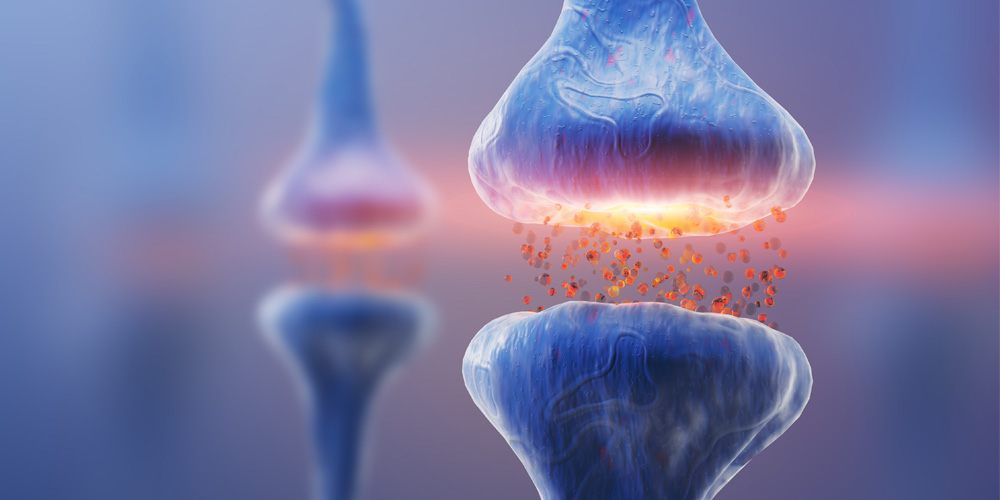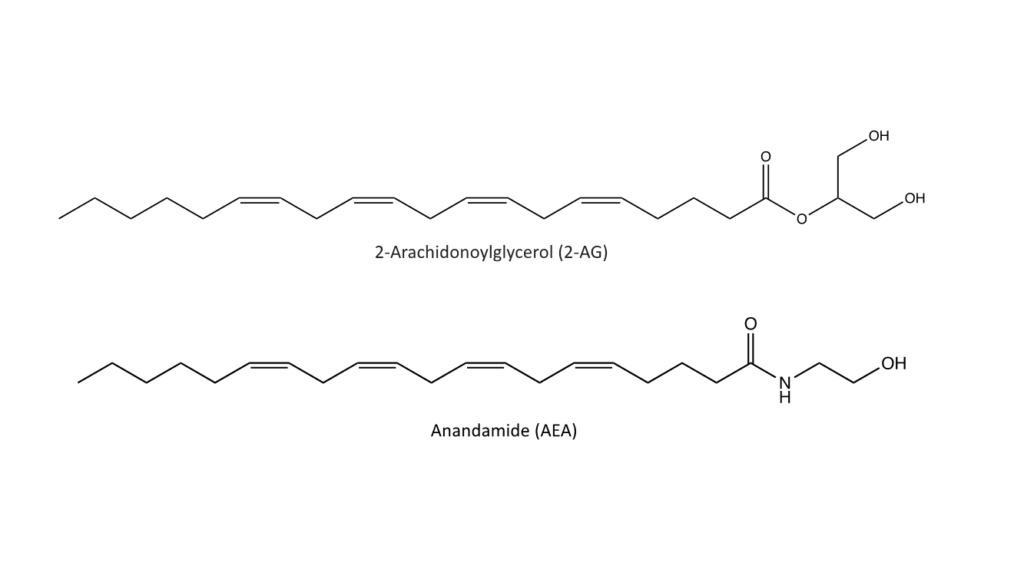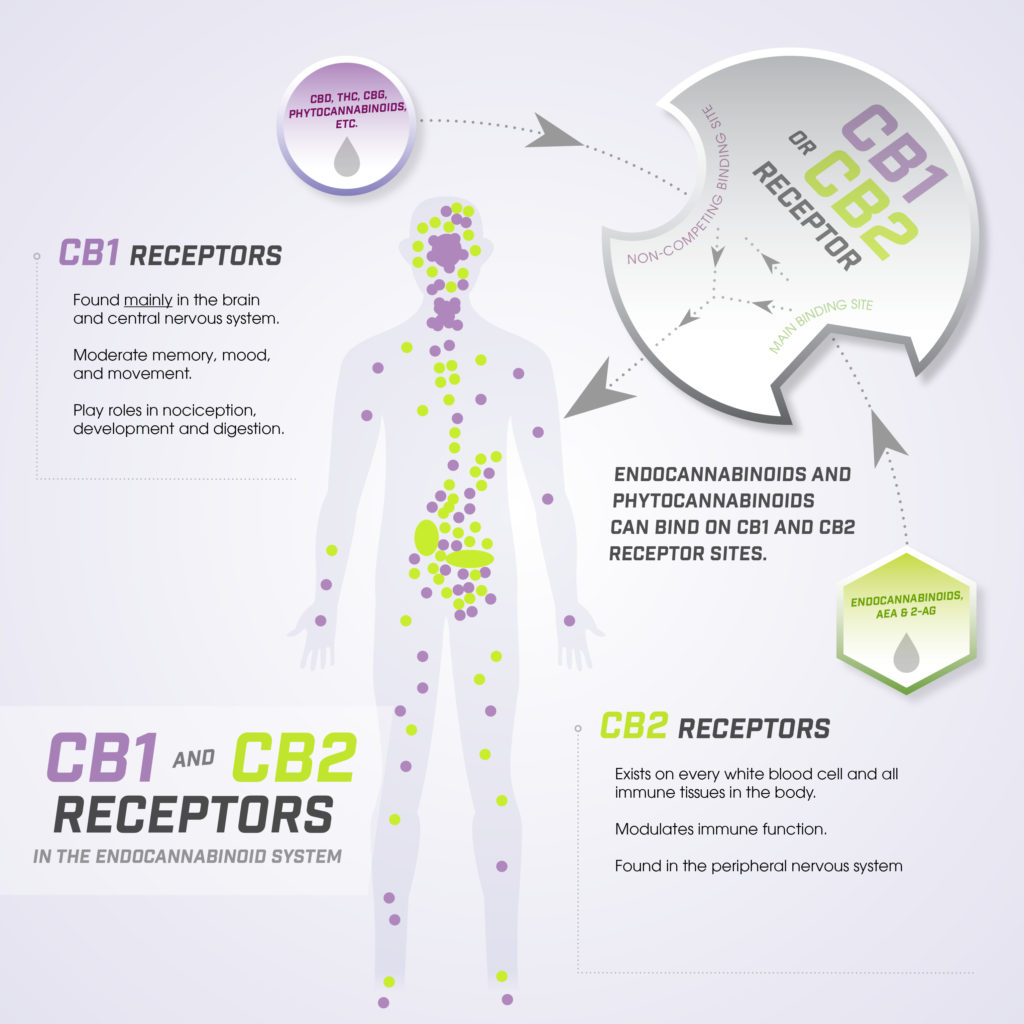
Discovery of CBD, THC & the ECS (Part 2)
May 13, 2020

In Part 1 of Discovery of CBD, THC, and the ECS, we left off with the discovery that all mammals have receptors that respond to compounds from cannabis plants, including hemp, such as CBD and THC. Those receptors, the CB1 and CB2 receptors, are found throughout the body including in the brain, spinal cord, immune system, etc. Since the Endocannabinoid System (ECS) is made up partly of those receptors, what does the ECS actually do? The short answer is that the ECS keeps our bodies in a state of homeostasis, or balance.
Scientific support began for the homeostasis theory of the ECS with the cloning of a rat CB1 receptor in Dr. Tom Bonner’s laboratory at the National Institute of Health (NIH) in 1990[1], followed immediately by the human CB1 receptor by Dr. C.M. Gérard and colleagues in Brussels in 1991[2]. A second cannabinoid receptor named CB2 was also identified at this time[3]. What did we learn from these experiments? The ability to first clone both rat and human cannabinoid receptors, and the identification of a second type of cannabinoid receptor, allowed researchers to understand the differences of those receptors and then search for naturally occurring molecules that would activate them. These naturally occurring molecules turned out to be the specialized neurotransmitters we discussed in Part 1 of this series, called endocannabinoids.
This research path led to the discovery that the ECS is made up of three working parts to support proper functioning; the endocannabinoids, endocannabinoid inhibitors, and receptors. First, let’s discuss how endocannabinoids activate the ECS. There are two major endocannabinoids responsible for this activation: Anandamide (ah-nan-da-mide), which binds with CB1 receptors, and Arachidonoylglycerol, mostly referred to as 2-AG, which binds to both CB1 and CB2 receptors.

The second of the three parts of the ECS are enzyme inhibitors, molecules designed to stop or slow chemical reactions specifically designed to work on endocannabinoids. These enzyme inhibitors reduce endocannabinoid activation by altering Anandamide and 2-AG on the molecular level. The enzymes that reduce endocannabinoid activity are referred to as Fatty Acid Amid Hydrolase (FAAH) and Monoacylglycerol Lipase (MAGL). They inhibit endocannabinoid activity by changing the shape of Anandamide and 2-AG rendering the endocannabinoids ineffective and unable to bind with receptors.
The third part of the ECS are the CB1 and CB2 receptors. Each type of receptor is found in every part of the body but the CB1 are more abundant in the Central Nervous System (brain and spinal cord) and the CB2 are found in a higher concentration throughout the Peripheral Nervous System and on immune cells.

The role of the ECS is to maintain a stable and balanced internal environment despite fluctuations in the external environment. So, despite chaos affecting our everyday lives, our inner body strives to remain balanced. The ECS is our internal system that maintains homeostasis within the body, and it is thought that if the ECS fails, so, too, can your overall wellness.
The discovery of the ECS is one of the most stunning finds of the 20th century and scientists are only scratching the surface on everything it can teach us. Investigation into the ECS is ongoing, getting us closer to understanding how this robust system appears to support nearly every function of the body through endocannabinoid regulation and phytocannabinoid support.
Make sure to catch our next post: Lock & Key to better understand how The Endocannabinoid System operates to affect change in our bodies.
[1] Pertwee R. G. (2006). Cannabinoid pharmacology: the first 66 years. British journal of pharmacology, 147 Suppl 1(Suppl 1), S163–S171.
[2] Gérard, C. M., Mollereau, C., Vassart, G., & Parmentier, M. (1991). Molecular cloning of a human cannabinoid receptor which is also expressed in testis. The Biochemical journal, 279 ( Pt 1)(Pt 1), 129–134.
About Zilis’ Scientific Research & Development Department
Our Scientific Research and Development Department is headed up by Dr. Marielle Weintraub, a hemp industry expert. She holds a master’s and a PhD in Behavioral Neuroscience and is very active in many dietary supplement and hemp industry trade associations, including her role as the current President of the U.S. Hemp Authority. Dr. Weintraub is committed to the continued development of hemp-specific information and testing to fulfill the Zilis mission.
Science posts for Discover are co-researched and co-written by Kelly McGill, Senior Scientific Technical Writer at Zilis. Kelly holds a bachelor’s degree in English and a master’s in Linguistics / TESL. She has been writing science-related content for over 20 years and is an expert in making difficult concepts easy to understand.
Zilis is the creator of UltraCell™, a CBD oil product derived from hemp. Based in Argyle, Texas, a suburb of Dallas-Fort Worth, Zilis is privately held. Visit zilis.com for more information.
SHARE THIS POST
ABOUT THIS BLOG
Discover : The blog with the lifestyle, nutrition, science, and history of the hemp industry.
It’s your go-to for the most up-to-date information on hemp, CBD, dietary supplements, and more! Check it out!






